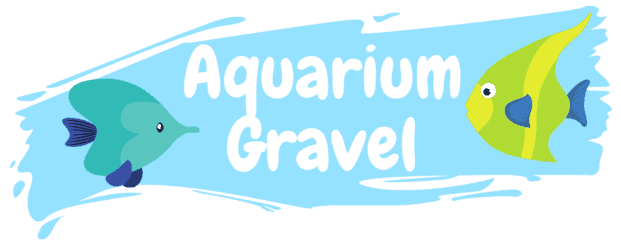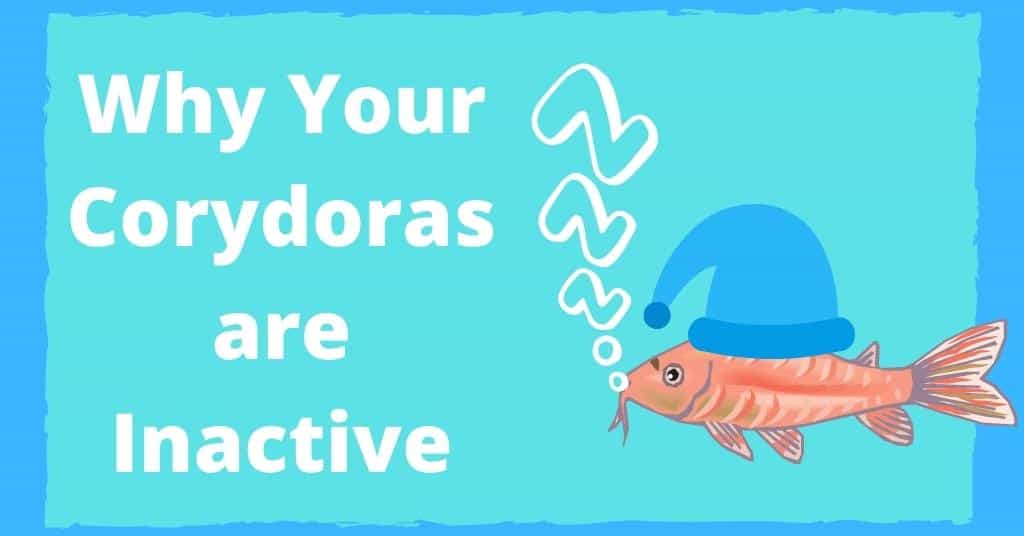Last Updated on December 10, 2021 by cmoarz
It’s worrisome when you see your corydoras just sitting at the bottom of the tank and not doing much. In most fish it’s a sign of illness or stress, But is it something you need to worry about with corydoras?
Why are my corydoras inactive in the tank? There are quite a few reasons this can happen, So let’s get into them.

So why are your corydoras inactive?
Table of Contents
They are just resting: The ideal reason corydoras are inactive is because they are simply resting.
When corydoras are active, they are ACTIVE. But they are also very lazy fish and will often take a break for a few hours.
This is especially true when they’ve been swimming around a lot or have been fed.
Glass surfing takes a lot of energy as well, And if you see them glass surfing (that’s a good thing) then they are probably just resting from all that energy they burned out.
It’s completely normal for corydoras to just sit on the bottom of the tank for long periods of time and you don’t need to worry about it.
They are stressed: If your corydoras have been in the tank for a while and suddenly become inactive, It’s possible that they are stressed.
There are many reasons why corydoras might be stressed in the tank, But some of the most common ones are bad water quality, Temperature, Overcrowding, etc.
Here are some of the other reasons that may be causing abnormal resting periods:

Temperature: Temperature being too low can cause corydoras to become inactive. If your tank is too cold for the species of corydoras you have, they will feel sluggish and tired out.
This can be fixed by warming up the water to the appropriate temperature for your species of corydoras.
This will usually fall between 74° and 80° F for most corydoras species.
Not enough corydoras in the tank: If you don’t have enough corydoras of the same species in your tank they may become stressed and stop eating.
If this is the case, get enough of the corydoras together in one tank to make them feel comfortable and happy.
Because corydoras are shoaling fish, You need to have at least 6 of the same species in a tank at any given time. Different species won’t work.
If you don’t have enough, the corydoras will become more and more inactive.
As shoaling fish, A chain reaction happens when one fish starts moving where they all start moving. So if you have only a few corydoras, they may not get the movement they need.
They are getting used to their new tank: It’s quite common for corydoras to become inactive when they are first transferred to a new tank.
This is because they are getting used to the new surroundings and maybe stressed from the move.
This adjustment could take a week or longer in some cases, So don’t worry if your corydoras are inactive for the first week or two after you’ve just gotten them.
They’re sick: While this is always the first thing people assume when they see their corydoras acting inactive, it’s often one of the rarer reasons behind all the others listed above.
You can tell a corydoras is actually sick if it’s lost its color, and is turning pale. If it has a white spot, fungal infection, or fin rot, It’s probably sick.
So while it is worrisome when your corydoras become inactive, There are many reasons why this can happen and most of the time it’s nothing to worry about. Just be sure to check for any symptoms of illness if none of the above seems like it would be what’s causing the inactivity.

Is It Normal for Corydoras to Stay Still And Inactive?
It’s quite normal for corydoras to stay still and inactive, specifically when they’ve been swimming around a lot or have been fed. Corydoras are very lazy fish and will often take a break for a few hours. This is especially true when they’ve been active glass surfing (that’s a good thing).
It’s also normal for them to just sit on the bottom of the tank for long periods of time and you don’t need to worry about it.
If your normally happy and active cory has started acting more lethargic than usual, be sure to check against all the potential issues listed above to see if you can figure out the cause. Once you do, take the necessary steps to correct it.

How Do I Know if My Corydoras Are Stressed?
When corydoras are stressed out they will display many signs and symptoms such as:
- Swimming in a frenzy
- Keeping a low profile
- Uninterested in food
- Trying to breathe at the surface of the water
- Lethargy
- Discolored gills
- Pale or whitish color, loss of color in general
- White spots on the body
- Swimming in unusual ways, swimming upside down, etc.
- Rapid gill movement, Like it’s trying to breathe really quickly.
About
Owner of AquariumGravel.com and also owner of actual Aquarium Gravel believe it or not! ;). Setting up beautiful aquarium sceneries and habitats since I was very young. Enjoy!
- Web |
- More Posts(290)

